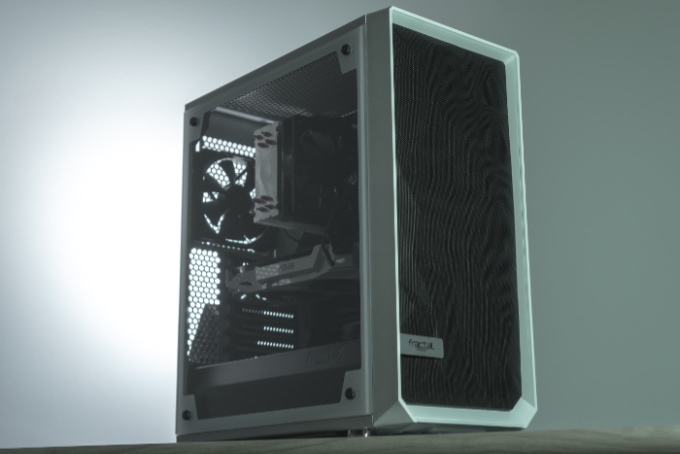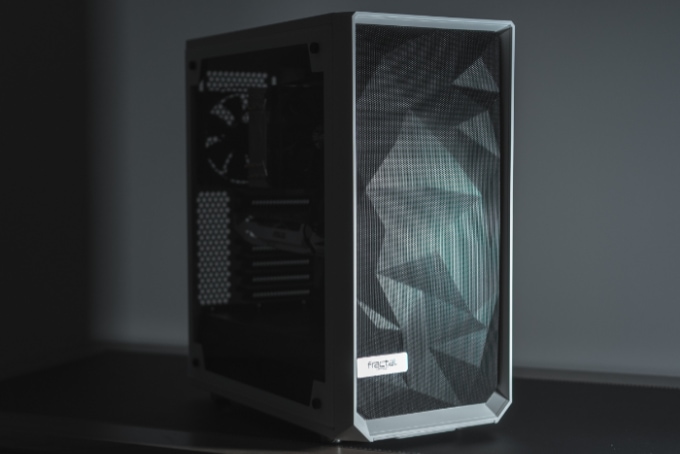Placing a PC on a Carpet: The Risks and Alternatives

Choosing the perfect spot for your computer is more than just a matter of aesthetics; it’s a decision that could impact your device's performance, lifespan, and even your own safety. If you're reading this blog, it’s quite possible you're wrestling with a commonly asked question: “Can I put a PC on a carpet?” This topic, while it may sound trivial at first, holds a level of importance that can be easily overlooked by many PC owners.
In a world where desktop computers are still widely utilized for their superior performance capabilities, especially among gamers and professionals, understanding the best practices for their placement is crucial. PCs, unlike laptops, have particular considerations given their structure, size, and cooling mechanisms.
So, where does carpet come into play? Why should you think twice before placing your prized PC on that plush, carpeted floor? This blog will aim to answer these questions and provide valuable insights for both current and prospective PC owners.
The Basics: PC Placement and Its Importance
Before we dive into the implications of placing a PC on a carpet, let's first understand why PC placement matters. A desktop computer, unlike a laptop or tablet, is a complex machine that often comes in two parts – the monitor and the tower.
While the monitor has its own considerations, it is the tower, the heart of your PC, that requires careful placement.
The tower houses various components such as the CPU, GPU, power supply, and hard drives, among others. Each of these elements generates heat during operation, and for your PC to function optimally, this heat needs to be managed effectively. This is where placement comes into play.
The Need for Ventilation and Heat Management
Proper PC placement is crucial for maintaining adequate ventilation and ensuring heat management. The tower often has fans and vents designed to draw in cool air and expel the hot air produced by the functioning components.
If these vents are blocked or if the surrounding environment doesn't allow for efficient air movement, it can lead to overheating. Over time, overheating can cause significant damage to the internal components, leading to performance issues and potentially even system failure.
The Role of Gravity in PC Placement
In addition to heat management, the placement of a PC also influences how it's affected by gravity. Traditional hard drives rely on spinning disks and read/write heads, which can be affected by orientation.
While this is less of an issue with modern solid-state drives (SSDs), it's still a consideration for PCs with older hard drives.
Reducing the Risk of Accidental Damage
Last but not least, proper PC placement is key to reducing the risk of accidental damage. A securely placed PC on a stable surface minimizes the chances of it being knocked over, bumped, or having liquids spilled on it.
These risks can increase when a PC is placed at ground level, especially on a surface like carpet that can be unstable or uneven.
The Controversy and Potential Risks of Placing a PC on a Carpet
The question of whether to place a PC on a carpet has sparked much debate among users. Some see no harm in doing so, while others strongly advise against it due to the potential risks it presents.
This divergence in views hinges on key concerns surrounding heat management, static electricity, and dust accumulation. Let's explore the specifics of each concern to better understand the potential risks involved.
Heat Management and Overheating
One of the primary responsibilities of a PC tower is to manage heat effectively. This is achieved through fans and vents designed to usher in cool air and expel hot air.
However, when a PC is stationed on a carpet, the carpet can obstruct these vents, especially if they are on the bottom of the tower.
This blockage restricts airflow, causing the system to struggle in maintaining its optimal operating temperature. When the PC is running high-performance tasks, generating more heat, the problem exacerbates.
Overheating over time can degrade the components, decrease performance, cause system crashes, or even result in permanent damage.
Static Electricity: A Silent Threat
Carpets, particularly those made from synthetic materials, are notorious for generating static electricity. While PCs are designed to handle a certain degree of static, a high static discharge can damage sensitive electronic components within the PC.
This problem is intensified in dry environments where static electricity can easily build up. A discharge into the PC could result in component failure, data loss, or in severe cases, a complete system breakdown.
Dust and Dirt Accumulation
Carpets often harbor more dust, dirt, and pet hair than hard surfaces. When a PC is placed on a carpet, it can more easily draw in this debris, leading to accumulation on internal components and fans.
Over time, this can impede the cooling system's performance, promote overheating, and potentially damage the internal parts.
Additionally, dust accumulation increases the chance of creating a short circuit, leading to further hardware damage.
Mitigating the Risks: What If You Really Need to Place Your PC on a Carpet?

If space constraints or other reasons compel you to place your PC on a carpet, it's crucial to understand how to mitigate the associated risks. Implementing certain strategies can help ensure the longevity and performance of your device.
Using a PC Stand or a Hard Surface
One of the most effective strategies is to use a PC stand or place a hard, flat surface under your computer tower. This helps lift the PC off the carpet, ensuring that the ventilation system isn't hindered by carpet fibers.
It also minimizes the risk of static electricity buildup and dust intake. You could use a commercial PC stand or get creative and use a flat piece of wood or a plastic panel, as long as it is sturdy and large enough to accommodate your PC.
Just make sure the chosen surface is stable to prevent accidental tipping over of the PC.
Regular Cleaning and Maintenance
Keeping your PC clean can significantly reduce the risk of dust accumulation and subsequent overheating. Regularly use a can of compressed air to blow out dust from your PC's vents and fans.
Also, consider cleaning the carpet area around your PC more frequently to minimize dust and dirt that could be sucked into the PC.
Proper Cable Management
Good cable management can prevent accidents that might knock over or stress your PC. Ensure cables are neatly arranged and secured, and not tangled or strewn about in a way that might lead to tripping or pulling the PC inadvertently.
Cable management solutions like ties, clips, or sleeves can be immensely helpful in maintaining a tidy and safe setup.
Alternatives to Carpet Placement
While mitigating strategies can reduce the risks associated with placing a PC on a carpet, the best way to safeguard your device is by opting for a more suitable placement altogether. Here are some alternatives that provide a more favorable environment for your PC.
On the Desk
Placing your PC on your desk is one of the most straightforward and effective alternatives to carpet placement. It keeps the vents clear for efficient airflow, reduces the risk of dust intake, and eliminates the issue of static electricity from the carpet.
Ensure your desk is sturdy enough to handle the weight of your PC, and that there is enough room for your monitor, keyboard, and other accessories.
Dedicated Computer Stand or Cart
If desk space is a constraint, consider using a dedicated computer stand or cart. These stands are designed to hold your PC tower off the ground, ensuring proper ventilation and reducing dust intake. Some models even come with wheels for easy mobility.
Custom-Built Shelving or Cabinet
If you prefer a neat and organized space, custom-built shelving or a cabinet designed to house a PC could be a great option. It can be designed to accommodate your PC perfectly while allowing for effective heat dissipation.
However, be careful to ensure the cabinet does not restrict airflow. Some ventilation or a fan might be needed to keep the PC cool.
Wall Mounts
For small form factor PCs or PC cases specifically designed for it, wall mounting can be an excellent space-saving alternative. It not only keeps the PC off the floor but also adds a unique aesthetic to your space.
However, this option requires more effort and skill to set up.
Conclusion
As we reach the end of this exploration into the controversial topic of placing a PC on a carpet, it's clear that the choice isn't as straightforward as it may initially seem. While carpet placement might be convenient or necessitated by specific circumstances, it carries significant risks including restricted airflow, static electricity, and dust accumulation.
Each of these factors can contribute to decreased performance and a shortened lifespan for your PC.
However, recognizing these potential hazards allows us to take steps to mitigate them. By using a hard surface or stand under your PC, keeping the device and surrounding area clean, and managing cables properly, you can reduce the risks associated with carpet placement.
Still, the safest route for your PC's well-being is to avoid placing it on a carpet altogether. Alternatives such as placing your PC on a desk, a dedicated stand, custom-built shelving, or even wall mounting, if feasible, can provide a more suitable environment for your PC.
Ultimately, the key takeaway is that your PC's placement plays a pivotal role in its performance and longevity.


